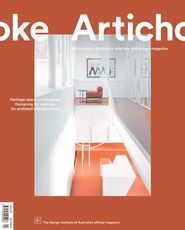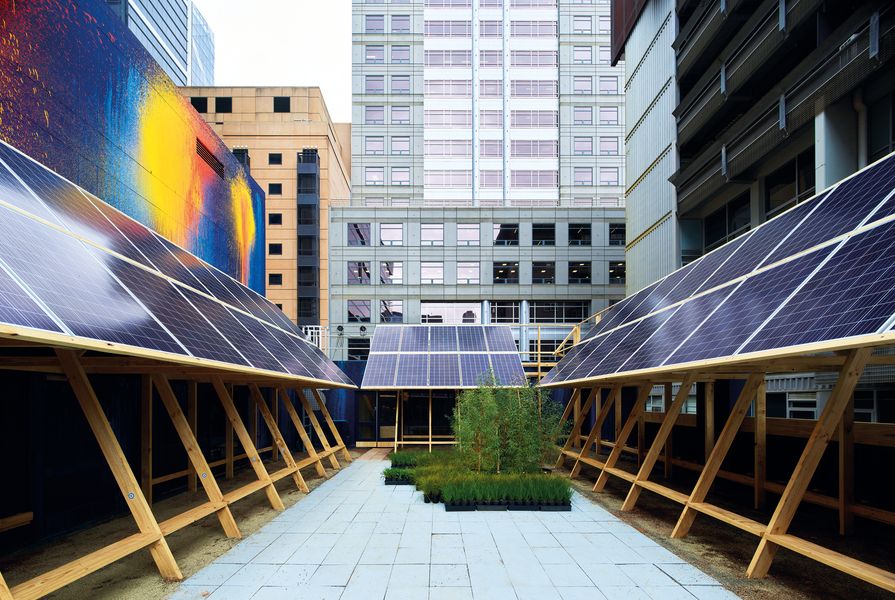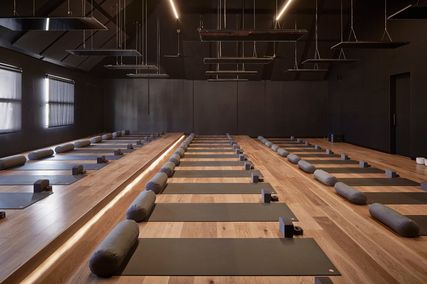After suffering a difficult year in 2020, the 2021 Melbourne Design Week program opened in late March to an eager audience. Under the banner theme of “Design the world you want,” the fifth iteration of the festival invited consideration of design’s ability to enact more desirable futures, from a multiplicity of perspectives. Over an 11-day period, visitors wandered from galleries to lecture theatres to waterfront venues and ports. Within a national calendar of design-related events, MDW’s offerings presented valuable opportunities for reflecting on which aspects of our individual and collective worlds might be reconfigured, taking in overlapping agendas across design’s multiple fields.
On the festival’s first weekend, an exhibition of algae bioplastic tableware advocated for more sustainable material futures. For several years now, Jessie French (Other Matter) has been exploring the various properties of seaweed, alongside their cultural histories of production. Other Matter and Fluff Corp (Jia Jia Chen and Claire Lehmann) presented a series of bowls and cups moulded from algae bioplastic and an array of ceramic cutlery and tableware, many of which were dipped in a similar algae glaze. The exhibition space doubles as French’s studio; a trolley topped with a pot and portable hotplate leans against one wall, an aquarium aerator bubbles in a back corner. The bowls themselves are compelling, a deep and cosmic orange swirled with black (from the spirulina, French explains), yet their charisma resides not only in their aesthetics but in their virtue of considered impermanence: compostable and recyclable, the crockery will, eventually, as French puts it, “politely disintegrate.”
At A Sea at the Table, a series of bowls and cups were presented, made from algae.
Image: Tom Ross
The design week centrepiece, A New Normal, projected territorial-scale ambitions. Finding Infinity’s Ross Harding has been working with 15 architectural practices to interrogate how Melbourne might become a self-sustaining city by 2030. Unfolding across one floor of a soon-to-be-redeveloped building on Collins St, and complemented by a series of live-streamed talks, the installations canvassed the profound possibilities for more critical urban worlds, evoking the futurity of current research and practice. The spectrum of visions entwined multiple scales; Ha’s greenhouse proposal for the Latrobe Valley meshed together agriculture and energy production, while Hassell’s installation deployed two Nissan Leaf batteries for energy storage, illustrating how a multi-storey downtown carpark could be convered into an energy-efficient electric car battery bank. Peering out over the CBD under the canopy of John Wardle Architects’ modular solar panel array, a better future seemed much nearer – many of the visions are in fact already underway.
Practical and collective approaches were threaded through the MDW program, however speculations on personal futures lent the content of Future Inheritance, for instance, a more intimate tone. Curator Marsha Golemac conceived of the exhibition as an exploration of how objects can absorb and transfer meaning; emotional, cultural and technical. Between Wanda Gillespie’s reinvented abacus that evoked the possibility of a more equitable economic system and Fatemeh Boroujeni’s exquisitely enigmatic vessel that mourned mass species extinction and offered hope through a gift of seeds, Seb Brown offered up a small totem-like statue, cast from bronze collected by his aunt from thrift stores. As a jeweller, Brown often creates necklaces that will be passed down, yet as a male, has yet to receive them. Highlighting and revealing domestic narratives, the exhibition contemplated micro-relationships – friends, family and the role of memory – as well as grander reimaginings of global hierarchies.
Ha Architecture’s presentation in A New Normal during Melbourne Design Week 2021.
Image: Kristoffer Paulsen
Against a backdrop of talks and workshops examining positive ways that design is engaging contemporary issues, a collection curated by Dale Hardiman and Tom Skeehan (Friends & Associates) inverted the Design Week brief to mostly productive effect. Punctuating a dimly-lit room at the Meat Market, the twenty contributions to A World We Don’t Want recalled a post-apocalyptic scene from a ruined future, the fallout of our present material and manufacturing trajectories. Flack Studio and Inform Upholstery + Design’s ashen chair haunted one corner, its spectral bulk playing off against Tom Henty’s cardboard boxes crafted from domestic debris and Guy Keuleman and Kyoko Hashimoto’s resin and waste vases, arrayed together on the central table. The show’s curatorial concept was perhaps most strikingly articulated, however, by Sam Tomkins and Daniel Licastro who presented a wall of serially packaged glass-headed hammers, each paired with a single nail. Vivid visions of a regiment of resource-depleting enthusiasts driving nails into the coffin of planetary life were conjured – in no uncertain terms, a world we don’t want.
Across its many venues and events, MDW articulated the possibilities for what design can offer: practical ways forward, a spur to action, a questioning and dialogue around the relationship between the personal and the political in practice. Behind the closed doors and physically isolated working formats of the past year, designers have been mobilized in grappling with our messy contemporary realities. MDW offered an extended moment in which to appraise these developments and to absorb, re-energize and connect, across different fields and scales of practice.
Source

Discussion
Published online: 12 Apr 2021
Words:
Emily Wong
Images:
Kristoffer Paulsen,
Lillie Thompson,
Tom Friml,
Tom Ross
Issue
Artichoke, June 2021



























